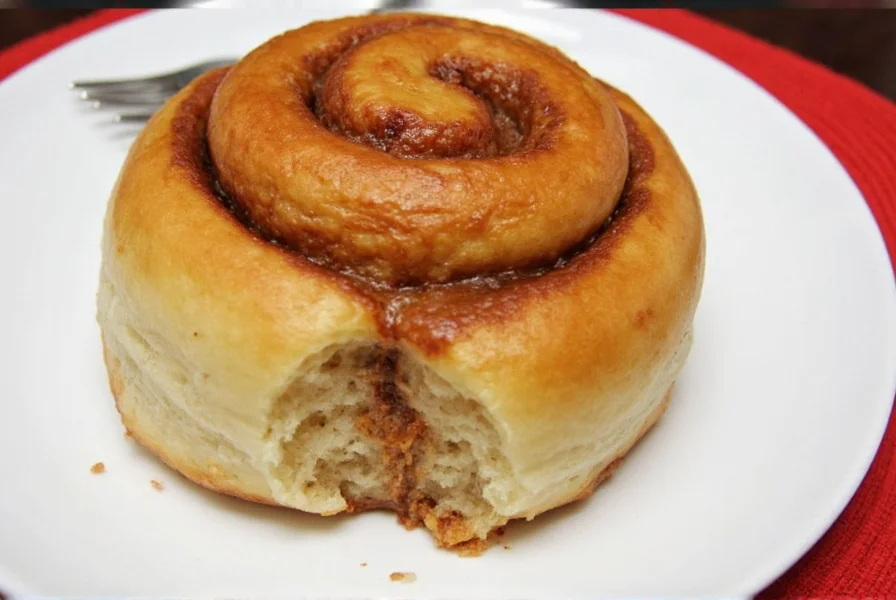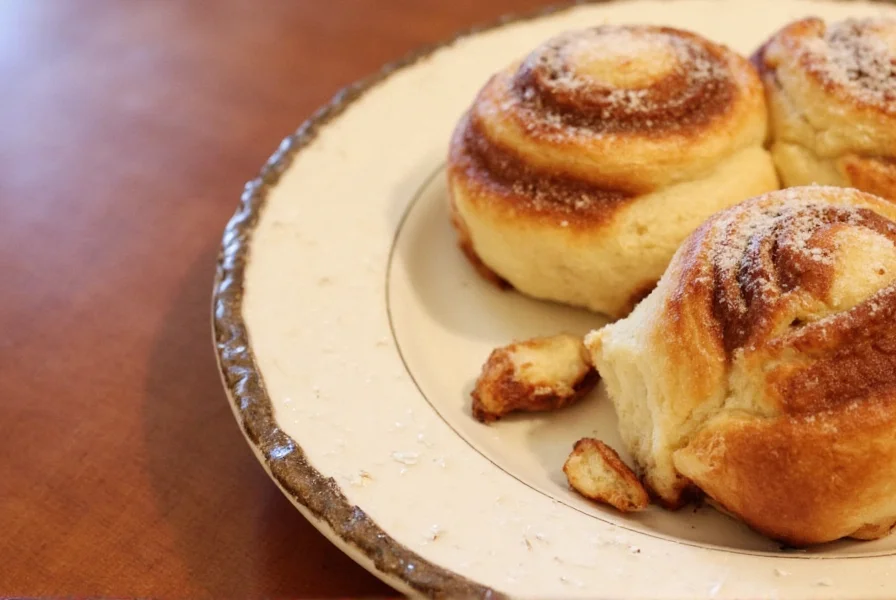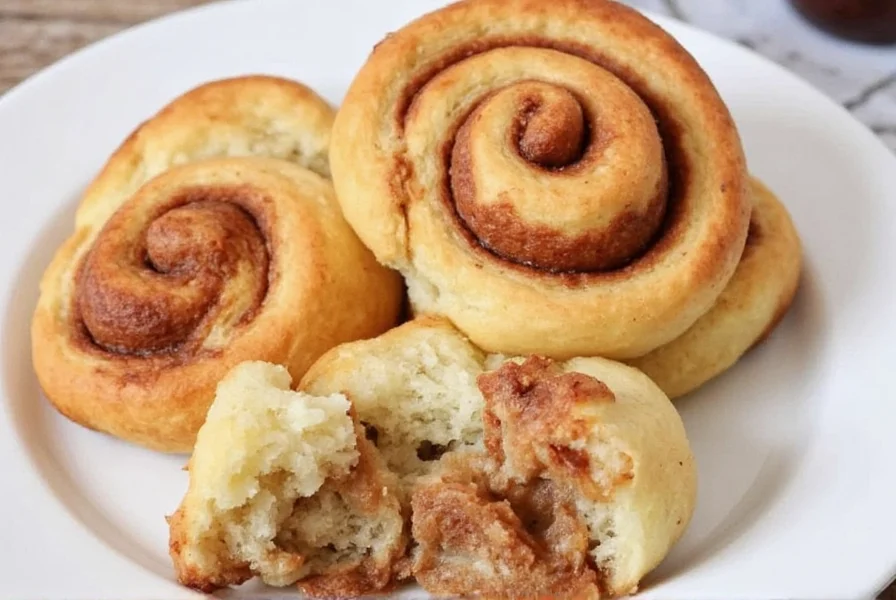Nothing compares to the aroma of freshly baked cinnamon rolls filling your kitchen in the morning. But who has time to mix, proof, and bake traditional cinnamon rolls before work or school? Overnight cinnamon rolls solve this dilemma with a clever time-saving technique that actually improves flavor and texture through controlled cold fermentation.
The Science Behind Overnight Cinnamon Rolls
When you refrigerate yeast dough overnight, something remarkable happens. The cold temperature slows but doesn't stop yeast activity, allowing for a gradual fermentation process. This extended period enables enzymes in the dough to break down starches into simpler sugars, which serves two critical purposes:
- Develops more complex flavor compounds that regular same-day rolls lack
- Creates tender crumb structure through gradual gluten development
- Allows for better moisture retention in the finished product
Professional bakers have used this cold-fermentation technique for decades with breads like croissants and danishes. Applying it to cinnamon rolls transforms what's typically a 3-4 hour process into a manageable evening preparation with morning payoff.
Why the Overnight Method Outperforms Traditional Preparation
While traditional cinnamon rolls require multiple proofing stages on the same day, the overnight approach offers distinct advantages that home bakers consistently appreciate:
| Traditional Method | Overnight Method |
|---|---|
| 3-4 hours active preparation time | 20 minutes evening prep + 10 minutes morning finishing |
| Morning rush with multiple proofing stages | Wake up to nearly ready-to-bake rolls |
| Milder flavor profile | Richer, more complex flavor development |
| Texture can be inconsistent | Consistently tender crumb and soft texture |
Essential Ingredients for Perfect Overnight Cinnamon Rolls
The magic of overnight cinnamon rolls happens through proper ingredient selection and handling. While basic recipes share common elements, subtle adjustments make the difference between good and exceptional results.

Dough Components
- Yeast - Use active dry or instant yeast (2¼ teaspoons). The cold fermentation requires slightly less yeast than same-day recipes to prevent over-proofing.
- Dairy - Whole milk (1 cup) provides fat for tenderness. Some bakers substitute buttermilk for added flavor complexity.
- Flour - All-purpose flour (3½-4 cups) works best. Bread flour creates too much chewiness for this application.
- Sweetener - Granulated sugar (⅓ cup) feeds the yeast during fermentation without overwhelming the dough.
Filling Components
- Cinnamon - Use Ceylon cinnamon for superior flavor (2-3 tablespoons)
- Brown sugar - Packed light brown sugar (1 cup) creates the signature caramel notes
- Butter - Unsalted butter (½ cup), softened to room temperature for even distribution
Step-by-Step Overnight Cinnamon Roll Preparation
Follow these precise steps for flawless overnight cinnamon rolls that deliver bakery-quality results every time.
Evening Preparation (20 minutes)
- Mix dough ingredients until cohesive ball forms
- Knead 5-7 minutes until smooth and elastic
- Place in greased bowl, cover, and let rise at room temperature for 1 hour
- Roll dough into 16x24 inch rectangle after first rise
- Spread softened butter evenly over surface
- Sprinkle cinnamon-sugar mixture uniformly across dough
- Roll tightly from long edge into cylinder
- Cut into 12 equal pieces using dental floss technique
- Arrange in greased baking dish with space between rolls
- Cover tightly with plastic wrap and refrigerate overnight
Morning Finishing (60-90 minutes)
- Remove rolls from refrigerator 30 minutes before baking
- Allow to come toward room temperature while oven preheats
- Complete second rise at room temperature (45-60 minutes)
- Bake at 350°F (175°C) for 22-28 minutes until golden
- Cool 5 minutes while preparing icing
- Apply warm icing immediately after baking

Troubleshooting Common Overnight Cinnamon Roll Issues
Even experienced bakers encounter challenges with overnight cinnamon rolls. Here's how to address the most frequent problems:
Dense or Tough Rolls
Cause: Over-flouring during rolling or excessive kneading
Solution: Measure flour by weight (450-500g) rather than volume, and handle dough gently after refrigeration. The cold dough requires less additional flour when rolling.
Rolls Spreading Instead of Rising
Cause: Over-proofing during the initial rise or excessive sugar in dough
Solution: Limit first rise to 60 minutes maximum and ensure proper yeast quantity. Sugar content above ⅓ cup can weaken gluten structure.
Fillings Leaking During Baking
Cause: Uneven rolling or gaps in the dough seam
Solution: Pinch the final edge of the roll firmly and position seam side down in the baking dish. Use dental floss rather than a knife for cleaner cuts.
Maximizing Freshness: Storage and Reheating Techniques
While overnight cinnamon rolls taste best fresh from the oven, proper storage maintains quality for subsequent days:
- Room temperature: Store in airtight container for up to 2 days
- Refrigeration: Keeps for 5-7 days but may dry out slightly
- Freezing: Wrap individual rolls tightly and freeze for up to 3 months
For optimal reheating, remove icing before storage. When ready to serve, warm rolls at 300°F (150°C) for 8-10 minutes, then apply fresh icing. Microwaving creates uneven texture and melts icing prematurely.
Frequently Asked Questions
Can I prepare overnight cinnamon rolls more than one night ahead?
While technically possible, preparing more than 24 hours ahead risks over-fermentation. The yeast continues working slowly in the refrigerator, and after 36+ hours, rolls may develop sour flavors and collapse during baking. For best results, limit refrigeration to 12-24 hours.
Why do my overnight cinnamon rolls sometimes have a yeasty flavor?
Excessive yeast flavor typically indicates over-proofing. Reduce yeast quantity by 25% for overnight recipes compared to same-day versions. Also ensure your refrigerator maintains proper temperature (38-40°F/3-4°C) as warmer conditions accelerate fermentation.
Can I use a different pan size for overnight cinnamon rolls?
Yes, but adjust accordingly. A 9x13 inch pan works best for standard recipes. For round pans, use two 8-inch or 9-inch pans with 6 rolls each. Smaller pans require slightly longer baking time as rolls are more crowded. Always leave at least ½ inch space between rolls for proper expansion.
How do I prevent the bottoms from burning during baking?
Place a baking sheet on the rack below your cinnamon rolls to deflect intense bottom heat. Alternatively, use a light-colored metal pan rather than dark non-stick, which absorbs more heat. If using glass, reduce oven temperature by 25°F (15°C) to prevent over-browning.
Can I make gluten-free overnight cinnamon rolls?
Yes, but with modifications. Use a quality gluten-free flour blend designed for yeast baking, increase xanthan gum to 1½ teaspoons, and add 1 extra egg yolk for structure. Gluten-free dough benefits from a slightly longer initial rise (75 minutes) before refrigeration. Expect slightly denser texture than traditional rolls.











 浙公网安备
33010002000092号
浙公网安备
33010002000092号 浙B2-20120091-4
浙B2-20120091-4